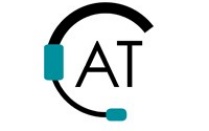Activity Stage 1 — Define Problem and Solution
Define the problem from the perspective of the eventual target consumer. Then describe the solution in objective "new to world" terms, not subjective "new to me/us" terms. The problem/solution set may represent an improvement in the features/functions of current market offerings, or it may represent an entirely new category of feature/function enabled by some new technological capability.
*NOTE: Any "R&D" proposal that does not include evidence of a rigorous Stage 1 & Stage 2 should be rejected because it is driven by subjective opinions rather than objective facts. An individuals bright idea is likely subjective and insufficient justification for a new project.
Steps 1.1 through 1.5
To view supporting evidence, click on magnifying glass icons or hyperlink text.
Click on the toolbox images to view tools related to each step.
Click on the Pill Crusher image to review an example of the steps in this stage.
Step 1.1
Identify a problem faced by persons with disabilities that could potentially be addressed by a technology-based device. Assess need for device with sufficient and detailed input from the intended primary user group (e.g., Persons with disabilities/Family/Professional) along with all relevant information sources and potential secondary user groups (i.e. Manufacturers; Clinicians; Consumers/End-Users; Policy Makers/Implementers; Funders; Brokers; Researchers).
Step 1.2
Define the problem (need) in terms of functional limitation or environmental barrier, and also identify intended target audience for solution. Identify this project's specific context for both problem and solution. Was the idea for Commercial Product truly derived from customer needs (or was it perhaps considered to be a natural evolution of research and development?)
Step 1.3
Propose plausible solution (goal) to problem in the form of a new/improved device. Address two key questions:
- How is the proposed solution superior to existing solutions — if they exist?
- Why does the envisioned solution to the validated problem not yet exist?
Step 1.4
Determine the contribution of this project with respect to the proposed deliverable(s). Will the project end with:
- A Conceptual Discovery about the problem/solution suitable for publication/presentation (via NtK Discovery Phase)?
- A Functional Prototype demonstrating proof of concept as an invention (via NtK Invention Phase);
- A Commercial Product deployed in the marketplace (via NtK Innovation Phase)?
Opportunity for Universal Design (UD). Be mindful that the problem might be shared by other user groups beyond people with disabilities.
Step 1.5
Outline the path from planned project output (Conceptual Discovery; Prototype Invention; or Product Innovation) to the target market and beneficiary stakeholders. Address another set of key questions:
- How will target users find and assess the Product?
- What partners will be needed to complete downstream Stages/Gates?
Decision Gate 1
Does the proposed problem/solution set appear to be novel in state of practice; generally feasible to implement; will envisioned output be useful to target audience; and is there a clear path from project output to the beneficiary stakeholders?
The project leader has three options:
- Proceed directly to Stage 2;
- Reiterate Stage 1 if any of the critical elements are not fully validated; or
- Terminate the project due to inability to clearly articulate critical elements including: Problem, Solution, Target Audience, Project Path, or Intended Output.












